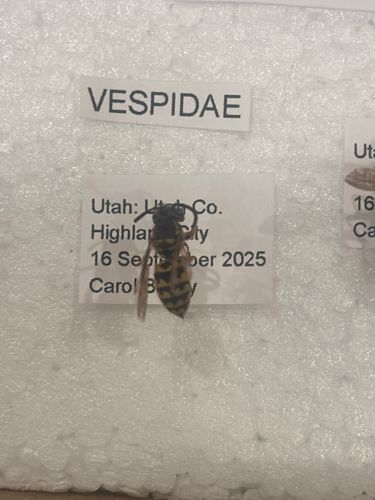Wasp (likely Yellowjacket or Hornet)
Scientific Name: Not specifically identifiable from the image, but belongs to the family Vespidae. Common genera include Vespula, Dolichovespula, or Vespa.
Order & Family: Order Hymenoptera, Family Vespidae
Size: Typically 10-25 mm (0.4-1 inch) in length, varying by species and caste.

Natural Habitat
Highly variable depending on the specific species. Can be found in urban areas, forests, grasslands, and suburban gardens. Many build nests underground, in trees, shrubs, or within structures.
Diet & Feeding
Adult wasps feed on nectar, fruit juices, and other sugar sources. Larvae are fed protein, usually insects and spiders, which adult wasps capture and chew into a paste. Some species also scavenge from human food sources.
Behavior Patterns
Social insects living in colonies with a queen, workers, and males. Colonies build nests, often with a paper-like material. Workers are sterile females responsible for foraging, nest maintenance, and caring for the young. They can be aggressive, especially when their nest is disturbed. They can sting multiple times.
Risks & Benefits
Risks: Can deliver painful stings, and multiple stings or stings in allergic individuals can be dangerous. They can be a nuisance at outdoor gatherings, especially when foraging for food. Benefits: Act as important predators for many insect pests, helping to control their populations, and some species are pollinators.
Identified on: 9/19/2025